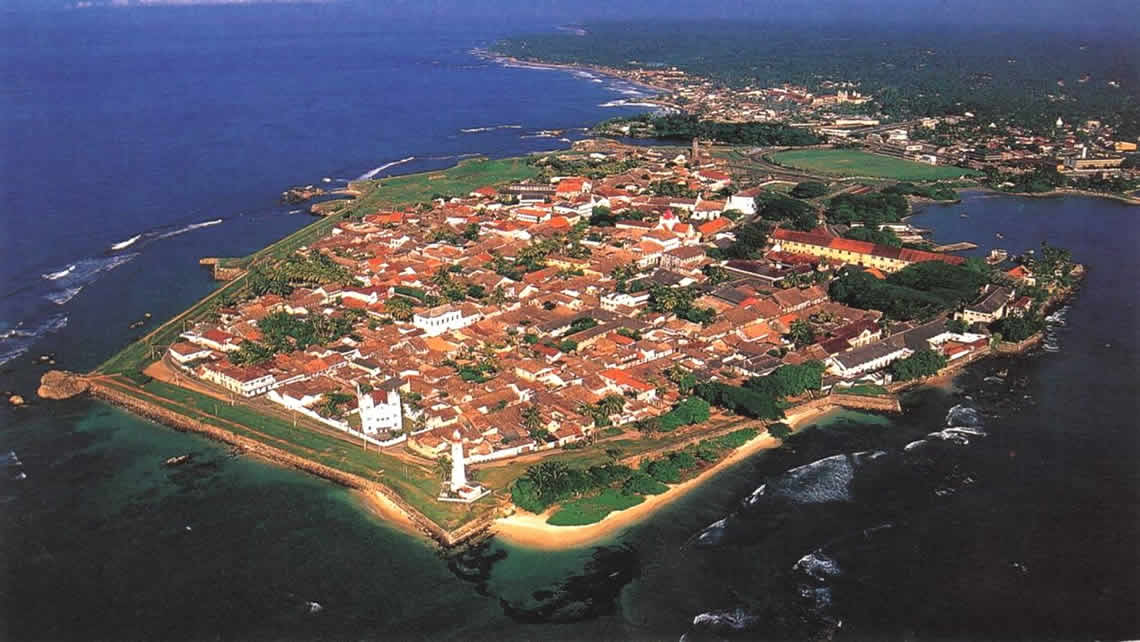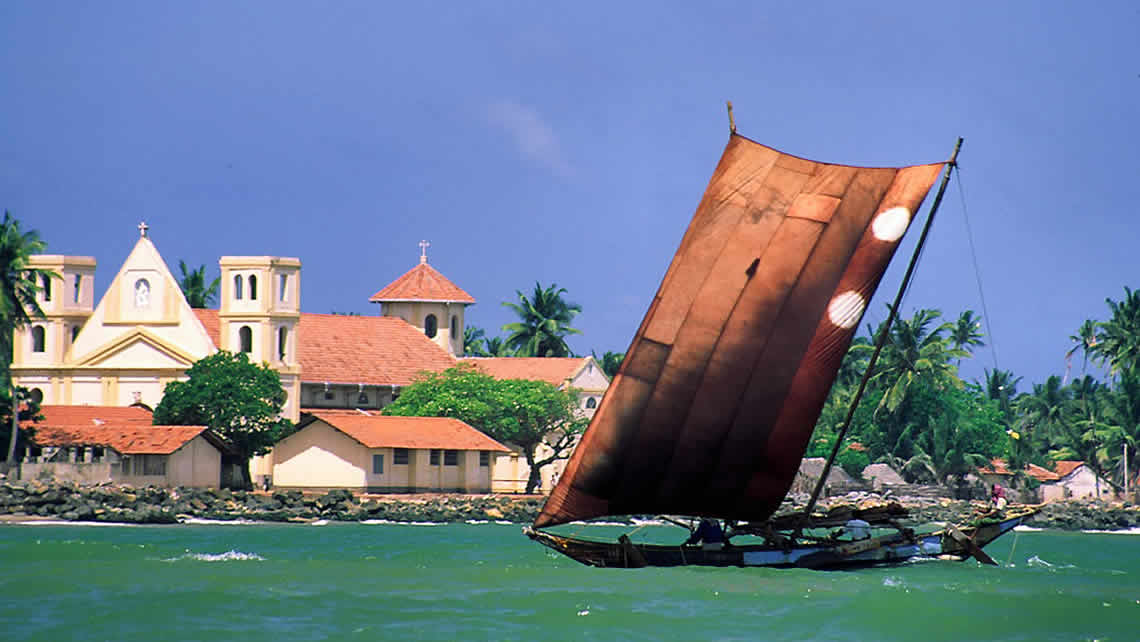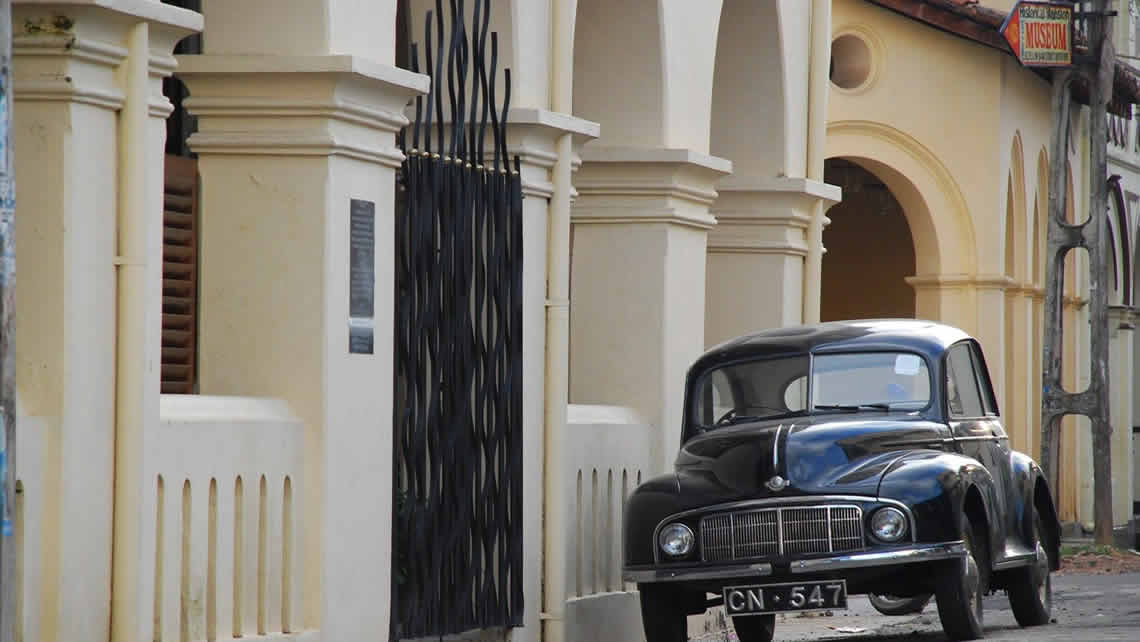Historical Ceylon Tour
FROM US$ 770
(Check below for Indian Rupee ₹ Exchange Rate)Historical Ceylon Tour 7 Days / 6 Nights
Historical Background:
The Dutch Era in Sri Lanka began on the 31. of May 1602 when the first expedition fleet arrived in Batticaloa and it lasted till 1776. The strategic position of Ceylon (todays Sri Lanka) in the Indian Ocean made it a major trade hub for precious gems, pearls, elephants, ivory, tortoise shell, hardwood and spices. Especially cloves, cardamoms, pepper and cinnamon.Cash crops such as Coffee, Tea and Rubber were later introduced by the Dutch East India Company, who constructed fortified settlements and canal systems around the main export harbors. The Galle Fort (UNESCO Heritage Site) and the well preserved 'Dutch Canal' are some of the best still existing examples of this time and part of this tour.
Even today you still can feel the Dutch influence in the Sinhalese and Tamil languages and there are still mixed Dutch-Sri Lankan people known as 'Burgher', another legacy of Dutch rule.
More information about the Colonial Period in Ceylon can be found after the tour itinerary
Day 1 :
Airport l Negombo
Arrival at the Bandaranayake International Airport, meet and transfer to your first hotel on the Negombo Beach. Negombo is a major harbour city north of Colombo. Near the waterfront you can see the remains of the 17th-century Dutch Fort and the Negombo Lagoon, lined with fishermen’s huts, feeds into the Dutch-era Hamilton Canal. The neoclassical St. Mary’s Church features a ceiling decorated with vivid religious paintings.
Overnight at the JETWING LAGOON NEGOMBO
Day 2 :
Negombo l Kalpitiya l Mannar
After breakfast we leave for Kalpitiya, north of Negombo. Kalpitiya is known for its serene beauty and consists of 14 islands. Here we visit the Dutch Reformed Church (also known as St Peter's Kerk), which is located between the former Dutch Fort and the village. The church was built in 1706 and is a smaller version of the church within the Matara fort. It is one of the oldest Protestant churches in the country.
Next is the Dutch Fort in Kalpitiya. Built between 1667 and 1676, the fort was important as it commands the entrance to the adjacent bay, The Puttalam Lagoon. The Dutch even constructed a canal from Puttalam via Negombo to Colombo to transport cinnamon from the area.
After your visit we proceed to Mannar. Overnight at the PALMYRAH HOTEL MANNAR
Day 3 :
Mannar l Trincomalee
After breakfast we leave for Trincomalee, Sri Lanka’s East Coast capital. Trincomalee is an important port city since ancient times. Set on a peninsula, Fort Frederick was built initially by the Portuguese and captured in 1639 by the Dutch. Within its grounds, the grand Koneswaram Temple stands on Swami Rock cliff, a popular vantage point for blue-whale watching. The holy complex contains ornate shrines and a massive statue of Shiva. Nearby Gokanna Temple has panoramic views over the city and the coastline.
Overnight at the AMARANTHE BAY HOTEL TRINCOMALEE
Day 4 :
Trincomalee l Passikudha
After breakfast we follow the coastline to Passikudha. Pasikudah or Pasikuda is now a coastal resort town located 35 kilometers northwest of Batticaloa. Historically a small Tamil hamlet alongside nearby Kalkudah, it is home to the Pasikudah Mariamman Temple. Many compare the beach scenery to the Maldives. The Dutch Fort in Batticaloa was built by the Portuguese in 1628 and was the first to be captured by the Dutch (18 May 1638) after their arrival on the island. It’s the most picturesque of the small Dutch forts of Sri Lanka. Situated on an island it is still in good condition. Near Batticaloa the Portuguese also had a tiny fort at Tanavare.
Overnight at the ANANTAYA Hotel PASSIKUDHA
Day 5 :
After a scenic drive along the East - South Coast we will be reaching Galle. It’s known for the Galle Fort, a fortified old city founded by Portuguese colonists in the 16th century. Stone seawalls, expanded by the Dutch, encircle car-free streets with architecture reflecting Portuguese, Dutch and British rule. Notable buildings include the 18th-century Dutch Reformed Church. Galle Lighthouse stands on the fort’s southeast tip.
Overnight at the FORTALEZA LANDESI HOTEL GALLE
Day 06 :
Galle l Colombo
It was not till the Portuguese occupation that Galle rose to importance. They fortified it at the end of XVI century (around 1589) and called this fortress Santa Cruz, but notwithstanding it was conquered by the Dutch on 13 March 1640. It was the principal port of the island under the Dutch, they greatly strengthened the fortifications. Galle was the capital of Dutch Ceylon from it’s conquest (1640) till the conquest of Colombo in 1656. The old Dutch Government House dated from 1687. It’s the best preserved of the VOC fortress in Ceylon with beautiful ramparts, bastions and gateways. Galle is a fortified Dutch city, many are the old Dutch houses, a beautiful Dutch church dated 1752-54 is still in use, its walls are full with many tablets and family coats of arms in this church there are also interesting old tombstones.
The lighthouse at Galle Fort is believed to be the oldest in Sri Lanka. Galle lighthouse, also known as Pointe de Galle, is an onshore structure located inside the Old Dutch Fort. Unfortunately, a fire destroyed the original structure in 1936 and the current tower was built in 1940. The iconic landmark is the most visited lighthouse in Sri Lanka and offers a magnificent view of ships and boats entering the Galle harbour. If you wish to escape to a place of calm, these tall giant will guarantee you some peace and quiet, save for the sounds of the ocean.
Leave for Colombo .
Colombo was the capital of Portuguese Ceylon and here the Portuguese built several churches (Sao Francisco, Sao Paulo, Sao Domingo, Sao Lourenço, Capuchins, the Sé Matriz or cathedral etc.), many houses, an hospital, a misericordia, many convent, a custom house (Alphandenga) etc…
The old Portuguese town was encircled by walls and bastions. The first fort (called Santa Barbara) was built in 1518 but in 1524 it was abandoned. In 1554 a new fort was built and the city of Colombo developed. The Portuguese town was destroyed by the Dutch during the siege in 1655-56 and of the Portuguese churches only Sao Francisco survived. It was used as Dutch reformed church until 1749, then it was demolished. The Dutch rebuilt Colombo and strengthened its bastions. Today the old Portuguese and Dutch fort has disappeared, only the wall of a bastion remain. The best example of a Dutch house in Colombo is the building of the Dutch Period Museum that was built in the latter part of 17th century. Outside the former fort is the Wolfendahl church; a massive cruciform building, built by the Dutch in 1749, on the site of the Portuguese church of "Agua o Agoa de Lupo". It’s the most interesting of the few remains in Colombo of the Dutch period. Several tombstones of the Dutch Governors (Hertenberg, Vreelandt, Van Eck, Falck, Van Angelbeek) and Burghers are here. In the vicinity of the church there is the old Dutch belfry. The residence of the Dutch Governors is in front of the Colombo harbour, this building was converted into a church (St. Peter’s church) by the British in 1804.
Next visit the Dutch Church. Wolvendaal Church (Wolvendaalse Kerk) is located in Pettah, a neighbourhood of Colombo. It is one of the most important Dutch Colonial era buildings in Sri Lanka, and is one of the oldest Protestant churches still in use in the country.
You will get the chance to visit the Dutch Hospital. The Old Colombo Dutch Hospital (known as The Dutch Hospital ) is considered to be the oldest building in the Colombo Fort area dating back to the Dutch colonial era in Sri Lanka. It is now a heritage building and a shopping and dining precinct. Like many Colombo Dutch buildings of the
era, the walls are 50 cm thick. The structure features massive teak beams. The upper floor is located in the front wing and can be reached by wooden staircase. Paintings of the front and rear views of the Colombo hospital, done in 1771 by a Dutch artist—presumably Johannes Rach—are preserved in the Koninklijk Instituut voor Taal-, Land- en Volkenkunde at Leiden, in the Netherlands. These show that the building has changed little, the original landscaping has disappeared, however. Proceed back to your hotel.
Overnight at the MOUNT LAVINIA HOTEL COLOMBO
Day 07 :
Colombo l Airport
After breakfast transfer back to the airport for departure
RATES:
2 pax - 880 US$ p.p.*
4 pax - 800 US$ p.p.*
6 pax - 780 US$ p.p.*
8 pax - 770 US$ p.p.*
*if a winter peak season supplement applies, we'll inform you accordingly
- Sightseeing as per the itinerary without entrance fees
- 3* Hotel Accommodation with buffet breakfast and dinner ( half board )
- Private transport in an A/C luxury vehicle with the service of an English-speaking Chauffeur/Guide
- Vegetarian / Non-Vegetarian Meal Plan
- 24h Hotline
- Visa fees and international / domestic flights
- Meals other than specified
- Entrance fees
- Tipping and porterage
- Anything not specified in the package inclusions
Customize your Sri Lanka Tour for FREE!
This Sri Lanka Tour can be customized to fit your dates and special specifications. To get a tailor-made tour quote, please fill out the booking form and add your requirements under 'Remarks'. Our Sri Lanka experts will send you a revised itinerary with all available options free of charge.
You also can contact us at the numbers listed below.


